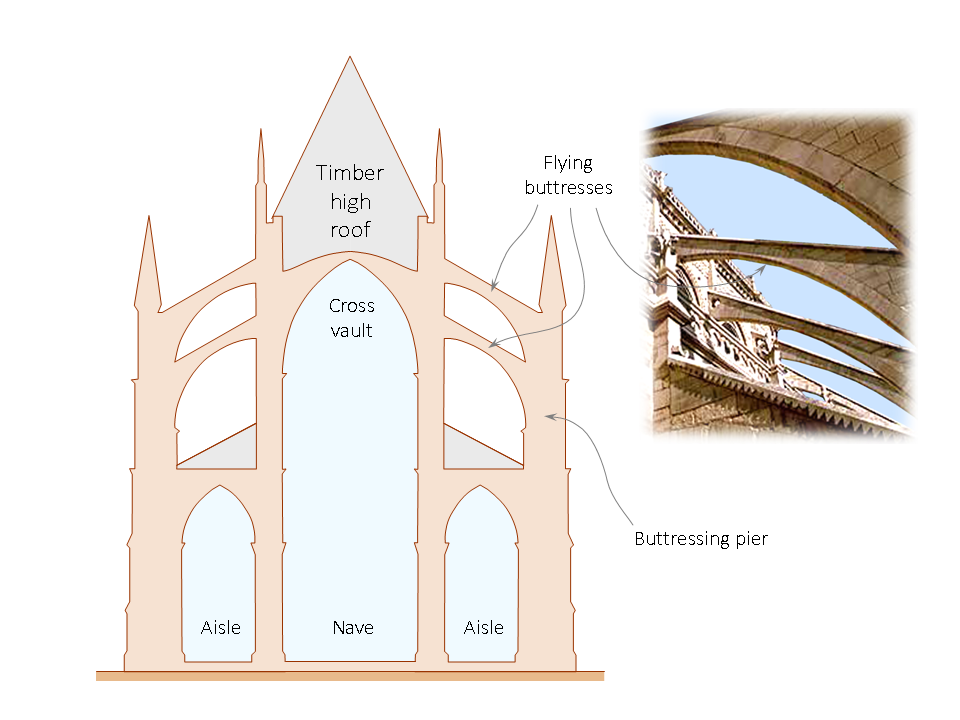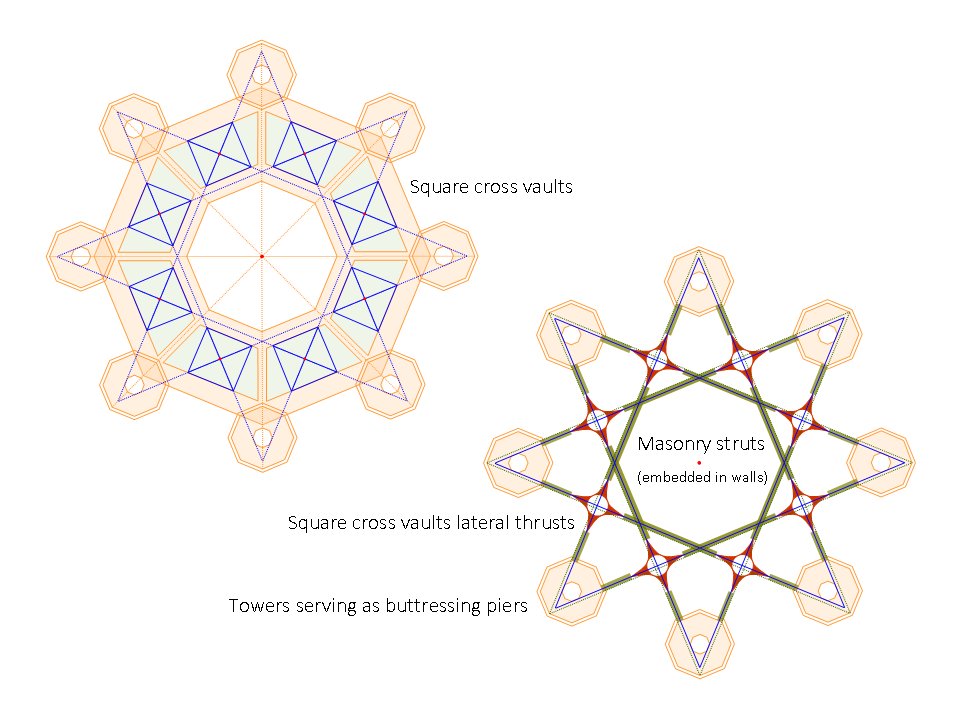Page 1
Cross Vault Lateral Thrusts
The key to understanding the plant design of Castel del Monte is the cross vault and the lateral thrusts they generate. This is the quintessential construction problem with stone vaults beseeching architects from Roman to recent times, before the advent of reinforced concrete and steel beams.
Ancient architects did not have the modern knowledge and analytical tools. The design of cross vaults presents challenging issues as indicated in the works of researchers studying the design of medieval cathedrals: Fraternali 2010, Fitchen 1961, Fangari 2010, Heyman 1995, Huerta 2001, and Huerta 2006.
The history of stone vaulting is indeed a journey of experimentation with singular and creative solutions now and then. The flying buttresses of the French cathedrals are the most renowned solution to the lateral thrust question, figure 1.

Figure 1. Flying buttresses.
Castel del Monte is indeed an experiment in the solution for cross vault design, aside whatever other purpose scholars give to this unique structure. The castle is a new and very successful solution to cross vault lateral thrusts, albeit within the frame of an octagonal plant, figure 2.

Figure 2. Cross vault lateral thrust solution at Castel del Monte.
In this solution, the octagon minor diagonals (those joining every third corner of the octagon) form an eight-pointed star, a figure that H. Götze refers to as the Islamic eight-pointed star (Götze 1998, pg. 129). Locating the cross vaults at the perpendicular intersections of the minor diagonals results into a network of lateral thrusts that terminate at the eight corner towers, which serve as abutment piers.
Arriving at lateral thrust solutions such as these was the culmination of a long development process in the construction technology of cross vault.

